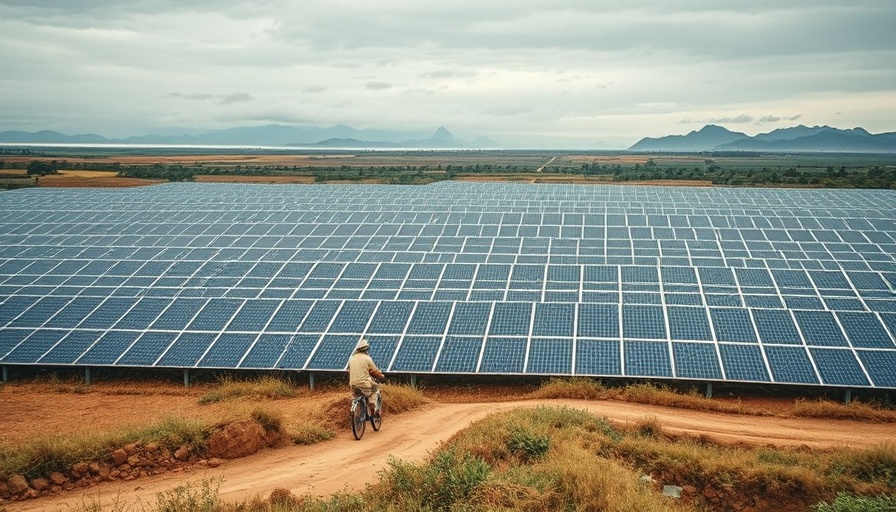
Understanding Indonesia's Renewable Energy Landscape
Indonesia's journey towards a sustainable energy future is fraught with challenges, but recent insights from Elrika Hamdi, deputy head of the Just Energy Transition Partnership (JETP) secretariat, shed light on the real barriers obstructing progress. While funds are not lacking, the pressing need for effective project viability is what holds back the nation’s ambitious clean energy goals.
Funding vs. Viability: Dissecting the Real Issues
According to Hamdi, Indonesia has successfully accessed about 20% of the funding required to meet its 2025 renewables target of $37 billion. However, the issue lies not in a shortage of funds but rather in the ability to get clean energy projects off the ground due to procurement delays from Perusahaan Listrik Negara (PLN), Indonesia's state-controlled electricity company. With PLN acting as the only major buyer of renewable energy, investors must navigate a complex bureaucracy that stifles project initiation.
The Impact of Coal Dependency
The overcapacity of electricity from coal plants has dominated Indonesia's energy landscape, significantly slowing the pace of renewable energy procurement. Despite PLN’s commitment to reduce reliance on fossil fuels by 2060, the existing infrastructure and investment focus on coal hinder advances in green energy.
Innovative Solutions: Captive Power Investment
Hamdi advocates for a shift in investment strategy towards captive power—localized energy solutions that power specific industrial sectors. This approach not only accelerates the transition to clean energy but also caters to the growing demand from sectors such as nickel and aluminium smelting, where industries often seek more reliable and greener energy options.
JETP's Role in Transforming Indonesia's Energy Sector
Launched in 2022, the JETP initiative aims to catalyze Indonesia’s energy transition, with an initial promise of $20 billion from wealthy nations. So far, $230 million has been allocated through grants and technical support, alongside $1 billion earmarked for approved projects. While challenges persist—most notably the recent withdrawal of the US from its commitments—Germany’s increased financial contribution has maintained the momentum of this critical funding pool.
Future Predictions: A Viable Path Forward
Looking ahead, the viability of renewable projects will greatly depend on how effectively Indonesia can transform its approach to energy procurement. Emphasizing industrial applications like captive power may well be the key to unlocking faster growth in the renewable sector. By creating favorable conditions for local power generation, Indonesia can not only enhance energy security but also align itself with global trends towards sustainability.
Community Engagement and Public Awareness
For sustainable development to take root, public understanding and support of renewable energy initiatives are crucial. By engaging communities in discussions about energy transition, the government can foster a culture of eco-friendly practices and encourage widespread participation in sustainability initiatives. This grassroots connection is vital for reducing the carbon footprint and encouraging responsible consumption.
Conclusion: Taking Action for a Sustainable Future
As stakeholders in Indonesia navigate the complexities of clean energy, understanding the interplay between funding and project realization is paramount. By prioritizing viable energy solutions, such as captive power and increasing community involvement, Indonesia can leverage its unique position in the renewable energy landscape to achieve its environmental goals.
Join the green revolution today by learning more about sustainable practices and participating in local initiatives! Add Row
Add Row  Add
Add 



Write A Comment